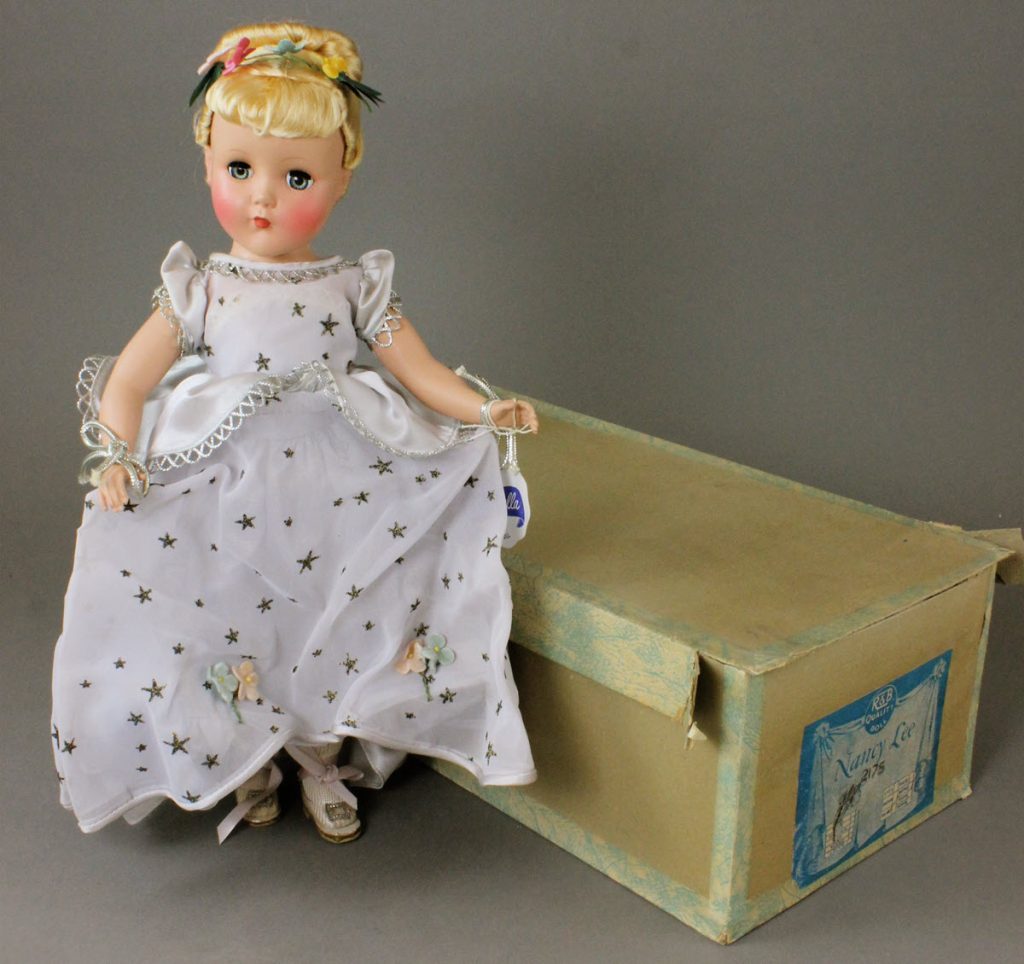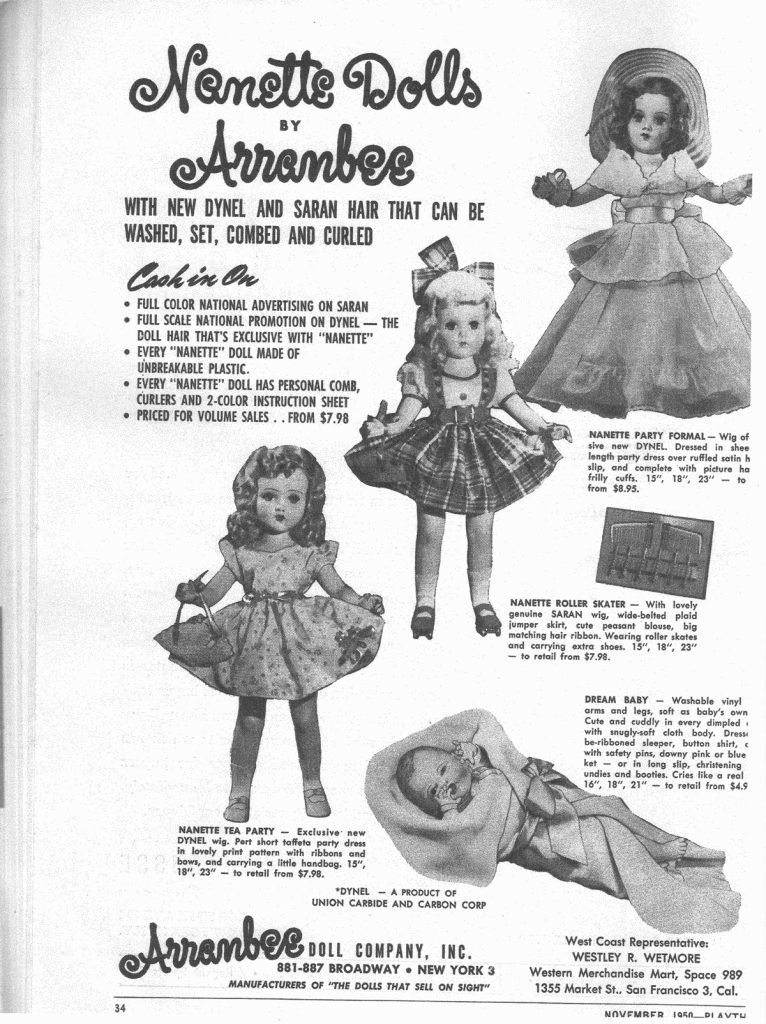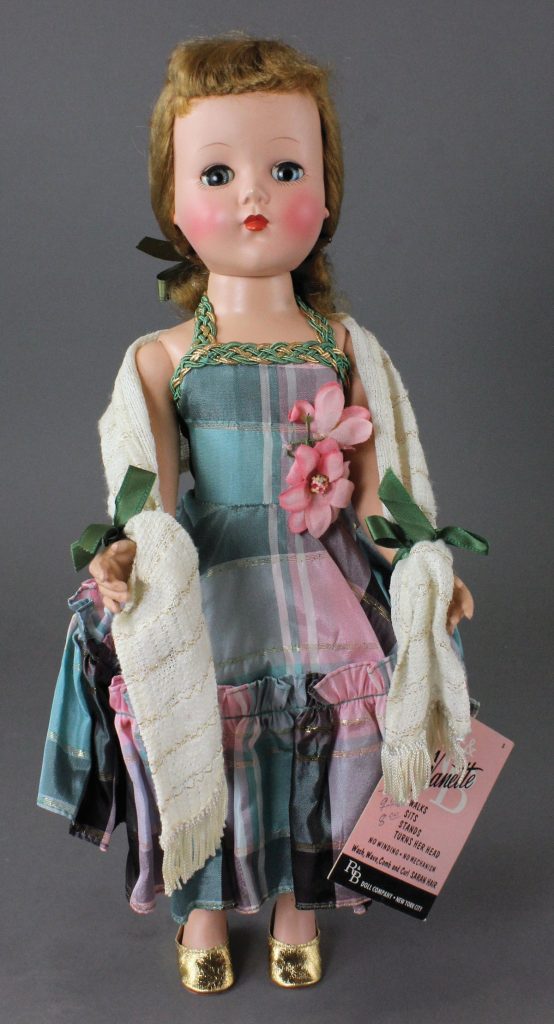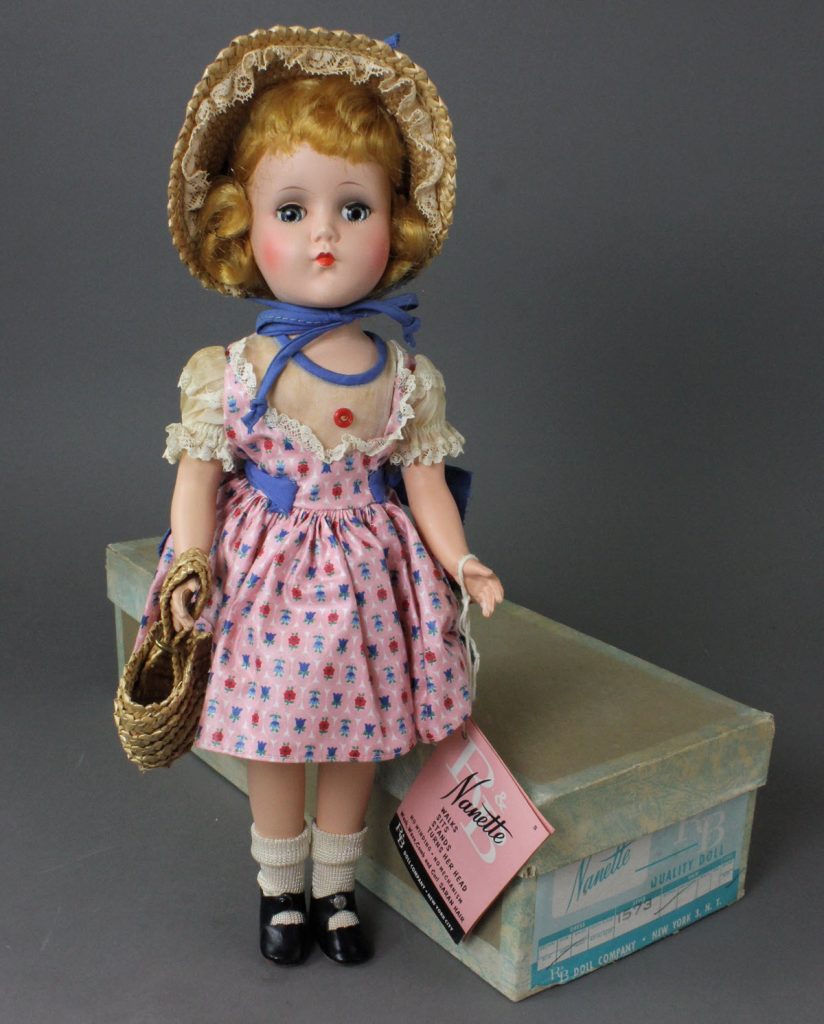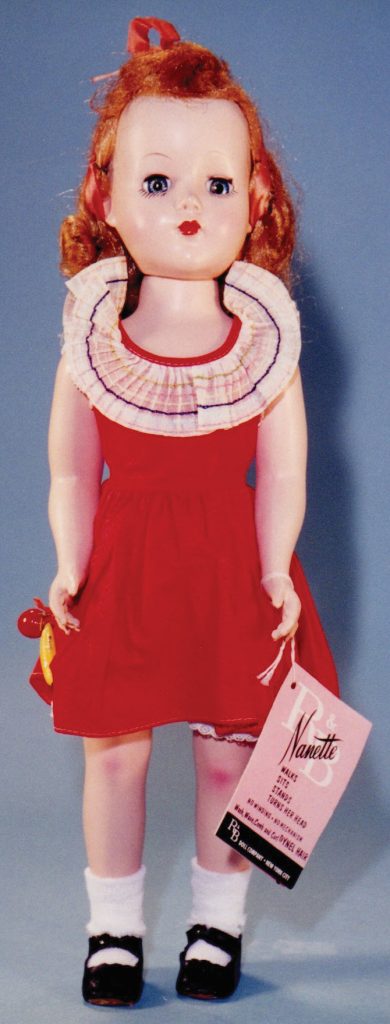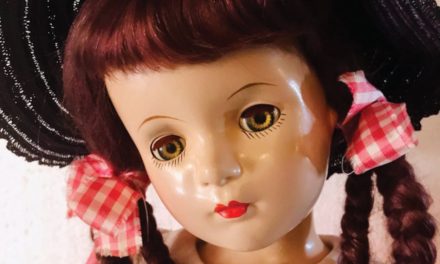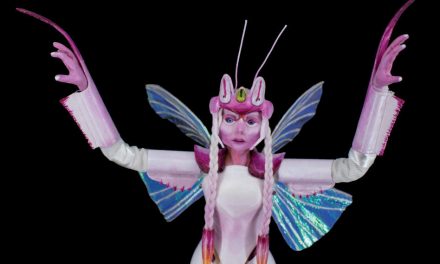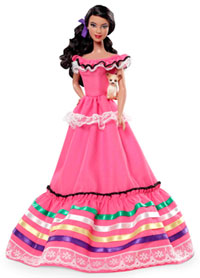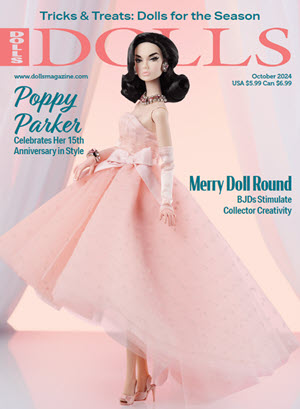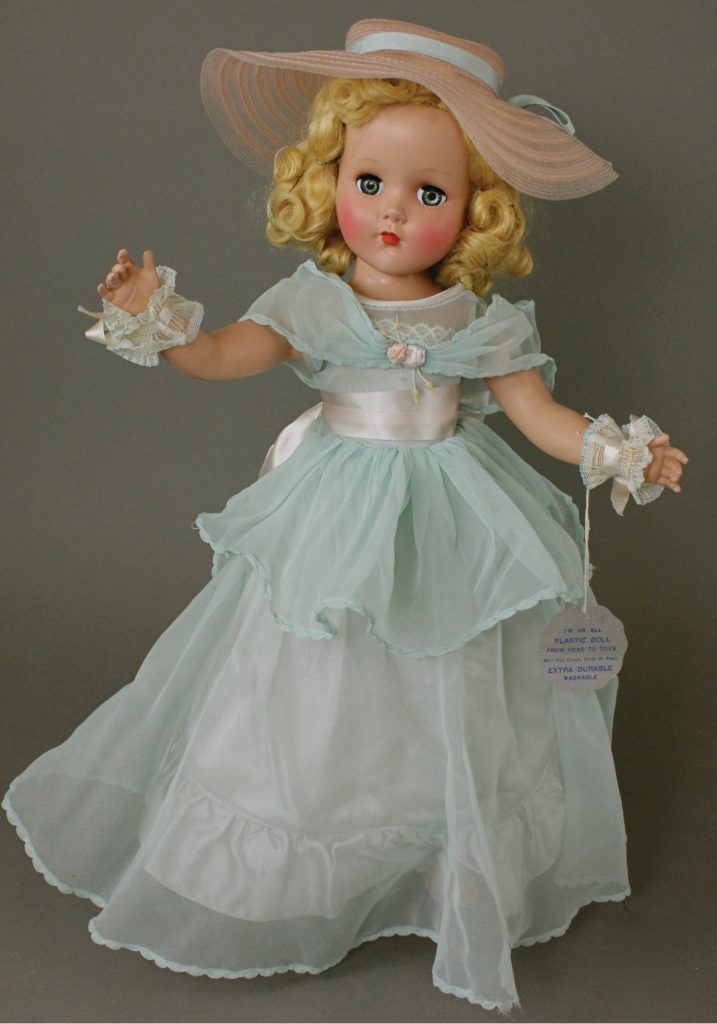
By Judith Izen
Photos courtesy of McMasters Harris Apple Tree Doll Auctions, except where indicated
I remember opening up a big box of hand-me-down clothes that had arrived from my older cousin in Florida. Sitting on top of the expensive clothing was the most beautiful doll I had ever seen. The doll had delicate facial features and hands, as well as a graceful body. Her hair was unlike that of any other doll I’d encountered. She became my favorite doll and remains so to this day. When I grew up and researched her, I found out she is Nancy Lee, a doll made by the Arranbee Doll Company of New York. She has a jointed and strung body made of hard plastic, and her unusual hair is made of floss, not nylon or synthetic hair like the other dolls of the era.
Arranbee produced beautiful Nancy Lee and Nanette hard-plastic dolls that rivaled Madame Alexander’s dolls in quality and fashion. The company made high-quality dolls from 1919 until 1958. William Rothstein (the R) and Berman (the B) founded the Arranbee (R & B) Doll Company in New York City to import bisque dolls. In the mid-1920s, Arranbee started selling composition dolls. During the 1930s and 1940s, their most popular composition dolls were Nancy and Debu’teen.
Introducing Hard Plastic
In 1948, Arranbee started making hard-plastic dolls, and they continued to use the name of their composition doll Nancy. They called their new hard-plastic dolls Nancy Lee and Nanette. It is hard to distinguish between Nancy Lee and Nanette. In fact, Suzanne DeMillar, coauthor of Arranbee Dolls: The Dolls That Sell on Sight, Identification & Value Guide, said: “As to Nancy Lee and Nanette, … most of the time, the only indication (of the doll’s name) is the presence of a wrist tag. Even the company’s original advertisements are confusing at times as I’ve found original-in-box dolls called one name and found them advertised as the other name!”
What we do know is that both Nancy Lee and Nanette came in a strung version. They were made in 14-inch, 18-inch, and 20-inch sizes. The strung Nancy Lee dolls were marked “R & B” on the head if they were marked at all. Strung Nanette dolls were also either unmarked or marked “R & B.” Nanette came in a version that walked, too, which had “R & B” marked on the head.
The dolls’ early wigs were either mohair or floss, with the floss hair being one of the distinguishing characteristics of Arranbee dolls. Very few other manufacturers produced hard-plastic dolls with floss hair. Later dolls had Dynel or Saran wigs. In 1950, Arranbee introduced a Dynel wig they advertised as “Curl-Rite Hair” that could be brushed, combed, curled, shampooed, and set. Each Nanette doll had a personal comb, curlers, and an instruction sheet. Their hair came in colors ranging from blond to red to brunette, and it was styled in updos, braids, pigtails, buns, or curls. All hairdos beautifully incorporated ribbons or hats.

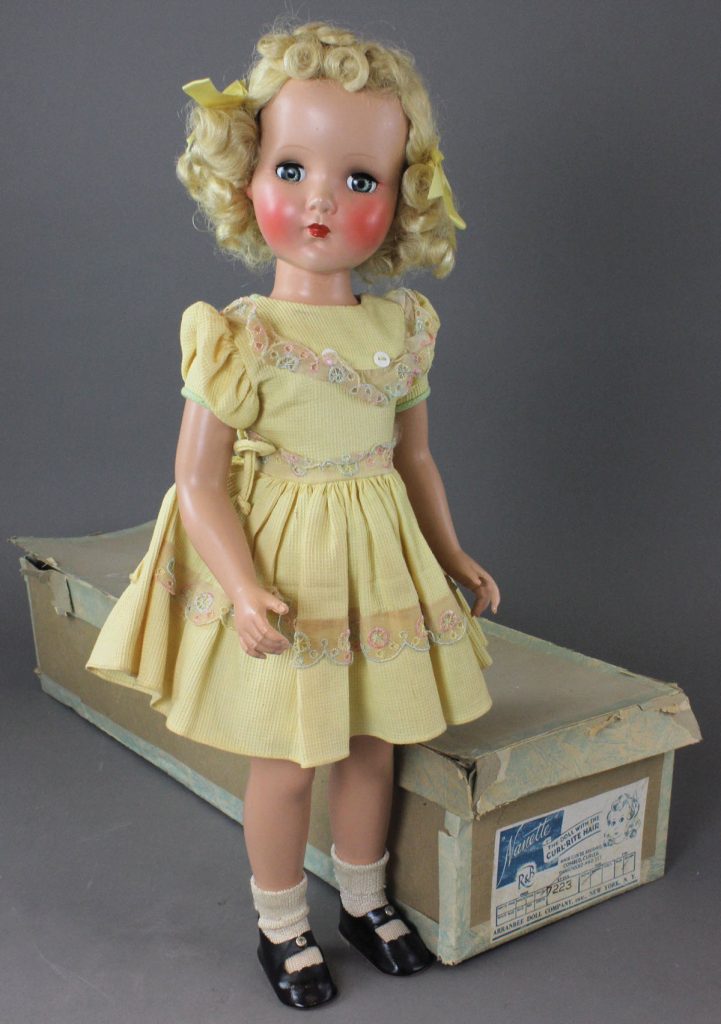
Arranbee purchased the hard-plastic doll parts from a doll parts manufacturer called Artistic Doll before 1954. In 1954, Arranbee contracted with a plastic molding company called Jamison Plastics to make their own doll parts; this company was located in Freeport, Long Island, New York, and headed by Stanley Binman. The hard-plastic (butyrate or acetate) heads and bodies were made in two halves and then glued together. The seam can be seen along the edges.
Collectors have to contend with even more confusion in the identification of the Arranbee hard-plastic dolls. At one point, Arranbee, the American Character Doll Company, and the Madame Alexander Doll Company were in a consortium that bought a plastic molding plant to make doll parts. The parts were all manufactured in the same plant, and then the separate companies would assemble their dolls and dress them in their own designs at their individual factories before selling them under their respective names. As a result, Madame Alexander’s Maggie face dolls, American Character’s Sweet Sue dolls, and Arranbee’s Nancy Lee and Nanette have similar characteristics.

Ernie Breiner set up Arranbee’s finishing plant in Long Island to dress, wig, package, and sell the hard-plastic dolls. Some of Arranbee’s dolls were designed by the famous doll sculptor Bernard Lipfert, who also designed dolls for other doll companies. This contributed to added similarities between the era’s hard-plastic dolls.
Clothing for both Nancy Lee and Nanette was well made using quality materials such as taffeta, organdy, cotton, and felt. Formal gowns were made of taffeta, organdy, satin, chiffon, brocade, and tulle. Some outfits had real fur trim. Others had corsages at their waists. From the 1930s until the end of the company, Ruby Hopf was Arranbee’s chief designer.
The dolls came with oilcloth shoes and little accessories tied to their wrists with ribbon. The dolls had lovely straw hats, ribbons in their hair, or earmuffs. Some had jewelry, such as a pearl necklace or a tiara.
Currently, the dolls are surprisingly inexpensive. Even mint-in-box dolls can be found in the $200 range. Doll collectors can reasonably obtain one of these lovely, well-designed Arranbee hard-plastic dolls that rank among those produced by the highly regarded American Character Doll Company, Madame Alexander Doll Company, and Ideal Toy Company. Arranbee’s Nancy Lee and Nanette may appeal to you as they continue to appeal to me.
Judith Izen is the author of several books on collectible dolls. You may contact her at jizenres@gmail.com.




